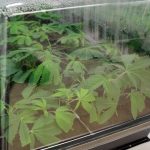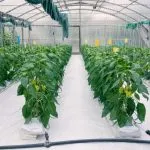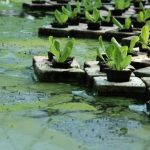Growing plants in a hydroponic system can be both rewarding and challenging, but one of the most crucial factors for success is maintaining the right pH levels. The pH for hydroponics plays a significant role in nutrient absorption, growth, and overall health of your plants. In this article, we will discuss how to keep pH stable in hydroponics so you can enjoy a thriving garden.
Understanding the importance of pH levels in your hydroponic system is essential as it directly affects your plants’ ability to take up nutrients. The ideal pH range for most plants is between 5.5 and 6.5, but it’s crucial to research the specific requirements of the crops you’re growing. A well-balanced pH level ensures that your plants have access to all the nutrients they need.
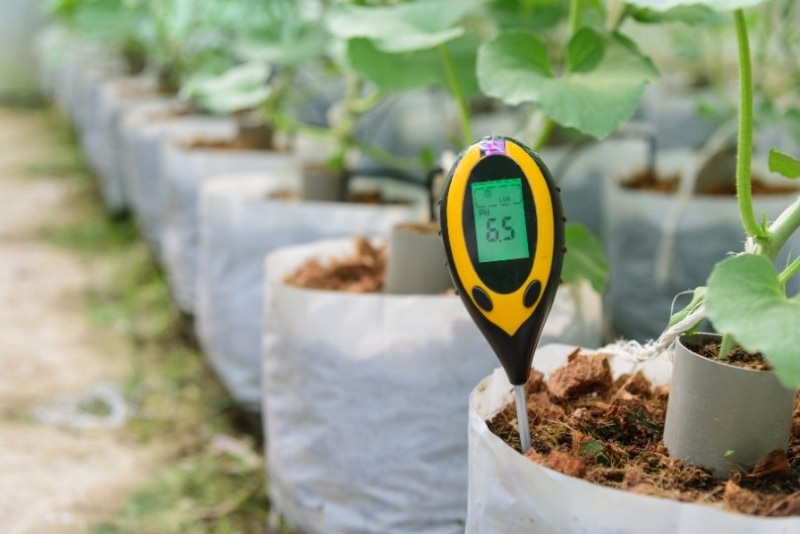
To keep the pH stable in your hydroponic system, you’ll need to implement consistent monitoring and adjustments. Using products designed specifically for hydroponics, such as pH up or pH down chemicals, will help maintain the desired range. With a little dedication and attention to detail, you can master the art of maintaining pH levels, allowing your hydroponic plants to thrive.
- Understanding pH and Its Importance in Hydroponics
- How to Measure and Monitor pH Levels
- How To Adjust pH In Hydroponics
- How To Lower pH In Hydroponics
- How To Raise pH In Hydroponics
- What Changes The pH Of Water?
- Preventing pH Fluctuations and Imbalances
- Choosing the Right Growing Medium and Nutrient Solution
- Frequently Asked Questions
Understanding pH and Its Importance in Hydroponics
Acidity and Alkalinity
pH is a value that represents how acidic, neutral, or alkaline a solution is. It is expressed on a scale that ranges from 1 to 14, with 7 being neutral. Values lower than 7 are considered acidic, and those higher than 7 are alkaline. The perfect pH for hydroponics varies depending on the plant species, but maintaining a stable pH level within the optimal range is crucial for successful hydroponic growth.
A balanced pH is essential for nutrient uptake and overall plant health. Each nutrient is absorbed more efficiently at different pH levels. If your hydroponic solution’s pH is too high or too low, it can lead to nutrient lockout, which means your plants won’t be able to absorb the necessary nutrients for growth.
One of the reasons hydroponic plants grow faster than soil-grown is that it is easier to control the optimal range of pH of the water than soil. This is a big advantage of hydroponics over traditional soil farming.
Optimal Hydroponic pH Chart
In order to promote the best pH for nutrient uptake in hydroponics, it’s vital to understand the specific pH range that each plant type prefers. Below is a table of common plants and their optimal pH ranges:
| Plant | Optimal pH Range |
|---|---|
| Lettuce, Spinach, Kale | 5.5 – 6.5 |
| Tomatoes | 6.0 – 6.5 |
| Strawberries | 5.8 – 6.2 |
| Cucumbers | 6.0 – 6.5 |
| Peppers | 6.5 – 6.8 |
| Basil, Thyme, Cilantro | 5.5 – 6.5 |
| Mint, Peas, Leeks | 6.0 – 7.0 |
| Carrots, Beets, Potatoes | 6.0 – 6.5 |
Keep in mind that these are general guidelines, and the best ph for hydroponics may vary slightly depending on the specific variety or strain of your plant. As a general rule, most plants thrive at pH levels between 5.5 and 6.5, but some may prefer a pH of 7 to 7.5.
By understanding acidity, alkalinity, and the optimal pH ranges for your plants, you can boost the nutrient uptake in your hydroponic system and promote healthy growth. Be sure to regularly test and adjust the pH of your solution to maintain stability and prevent potential problems.
How to Measure and Monitor pH Levels
Maintaining a stable pH is an ongoing process, so regularly monitoring and adjusting pH levels will help you succeed in hydroponics. To control the pH balance in your hydroponic system, follow these steps:
- Measure pH levels regularly: Use a ph tester for hydroponics to frequently measure the pH level of your nutrient solution. This will help you monitor fluctuations and take corrective action when needed. To ensure optimal pH levels in your hydroponic system, measure your nutrient solution pH before adding nutrients and after they have been mixed. This will help you see how your system responds to the nutrients.
- Adjust pH levels: If your pH is too high (alkaline), you can lower it using pH down products, like phosphoric or nitric acid. If the pH is too low (acidic), use pH up products, like potassium hydroxide or calcium carbonate, to raise the pH.
- Monitor nutrient concentrations: High nutrient concentrations can cause pH fluctuations. Keep an eye on nutrient levels and adjust them according to your plants’ needs.
- Aerate the nutrient solution: Proper oxygenation of the water helps stabilize pH levels. Make sure your system provides sufficient air circulation and oxygen to maintain a stable environment.
- Keep the system clean: Remove any dead plant matter, algae, and debris from your hydroponic system to prevent pH imbalances and maintain overall system health.
Testing Equipment and Methods
To measure and monitor pH levels in your hydroponic system, you can use various testing equipment. Here are the most common tools:
- Digital pH meter: A highly accurate and easy-to-use device for measuring pH levels. Remember to calibrate it regularly.
- pH pens: Portable and convenient instruments that work similarly to digital pH meters.
- Litmus strips: Affordable and straightforward testing method; however, they might not be as accurate as digital meters or pens.
Frequency of Monitoring
In hydroponic systems, it is crucial to monitor pH levels regularly to prevent nutrient lockouts. Here are some key recommendations:
- Every 2-3 days: This is the ideal frequency to ensure that the pH stays within the acceptable range (5.5 to 6.8 for most hydroponic systems).
- When adding or changing nutrient solutions: Always check the pH levels when adding nutrients or changing the nutrient solution to keep the pH stable.
- When using different water sources: Different water sources can have different pH levels and can affect your system’s pH balance. Therefore, if you use tap water, distilled water, reverse osmosis water, or rainwater, always check the pH levels at the nutrient reservoir.
How To Adjust pH In Hydroponics
The ideal pH level for hydroponics generally ranges between 5.5 and 6.5. In this section, we will discuss various methods to adjust and maintain pH levels in your hydroponic system.
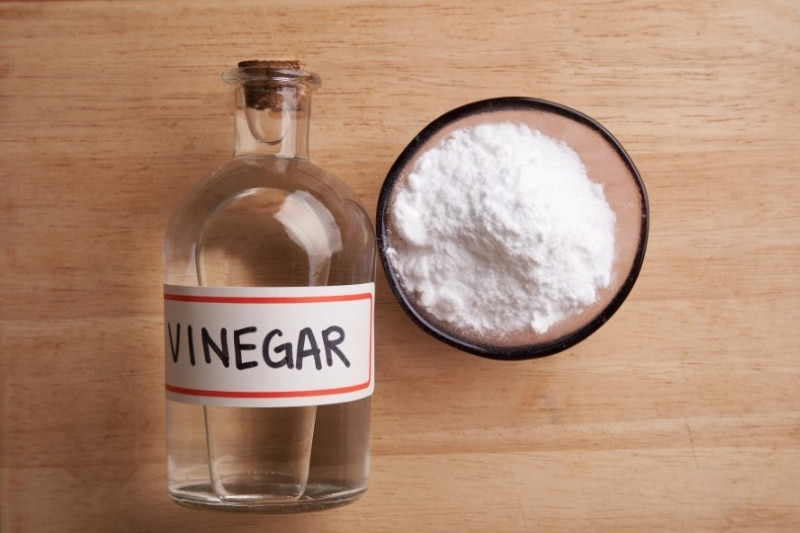
Adding Nutrients and Minerals
The first step in adjusting the pH in your hydroponic system is to make sure you have the correct balance of nutrients and minerals in your nutrient solution. The addition of certain elements can affect the pH within the reservoir. For example, adding more nitrogen can make the solution more acidic and lower the pH. It’s important to always monitor and adjust the nutrient solution to achieve the desired balance.
Using pH Up and Down Products
When there’s ph drifting or adjustments are needed, using pH up and down products is a common method to reach the desired pH level for hydroponics. These products contain specific pH up ingredients or pH down ingredients, which can be added to the nutrient solution to raise or lower the pH level. Some examples include potassium hydroxide (pH up) and phosphoric acid (pH down). Be sure to follow the manufacturer’s guidelines when using these products to avoid drastic fluctuations in your reservoir’s pH levels.
Automatic pH Controllers and Their Benefits
Investing in an automatic pH controller is a smart choice to ensure pH stability in your hydroponic system. These devices constantly monitor the pH level and automatically add pH up or down as needed to maintain the desired range. This process not only ensures stability but also saves you time and effort in manually adjusting pH levels.
Using automatic pH controllers also provides additional benefits, such as:
- Consistency: Helps maintain a stable environment for your plants, promoting optimal growth.
- Accuracy: Provides precise control over pH adjustments, reducing the risk of over or under-adjusting.
- Convenience: Automates the pH adjustment process, so you can focus on other aspects of your hydroponic system.
- Adaptability: Works with various types and sizes of hydroponic systems, making it a versatile solution.
How To Lower pH In Hydroponics
Maintaining the proper pH level in your hydroponic system is crucial for optimal plant growth. If the pH is too high, you can lower it by using various methods. Commonly used substances to lower the pH level include pH-down products, citric acid, vinegar, and lemon juice.
Can You Use Vinegar To Lower Ph In Hydroponics?
Yes, you can use vinegar to lower the pH of your hydroponic system in the short term. Vinegar is a weak acid that can help temporarily bring down the pH levels of your nutrient solution. However, it is not recommended for long-term use, as its effects on pH are temporary and it may introduce unwanted microbes. Instead, invest in a dedicated pH-down product or an automatic pH controller to maintain pH stability.
To use vinegar:
- Test the initial pH level of your nutrient solution.
- Gradually add small amounts of vinegar, stirring thoroughly.
- Re-test the pH level and repeat the process until the desired pH is reached.
Can You Use Lemon Juice To Lower Ph In Hydroponics?
Lemon juice is another weak acid that can help lower the pH level in your hydroponic system temporarily. Similar to vinegar, lemon juice is not ideal for long-term use as it can introduce organic matter and unwanted microbes to your system. Additionally, it may not be as effective as dedicated pH-down products or automatic pH controllers.
To use lemon juice:
- Measure the initial pH level of your nutrient solution.
- Carefully add small amounts of lemon juice, thoroughly mixing.
- Re-test the pH level and adjust as necessary until the desired level is achieved.
Remember to monitor and adjust the pH levels in your hydroponic system regularly for the best results. Using professional pH-down products or an automatic pH controller will ensure your system remains stable and efficient, promoting healthy plant growth.
How To Raise pH In Hydroponics
Raising the pH in your hydroponic system is essential for maintaining a stable environment for your plants to grow and thrive. Understanding how to do this, particularly using household items like baking soda, is crucial for any hydroponic gardener. We will discuss how much baking soda to use when raising the pH in your hydroponics system and some tips for doing so effectively.
How Much Baking Soda To Raise Ph In Hydroponics?
Baking soda, also known as sodium bicarbonate, is a commonly used household item that can be utilized to raise the pH in your hydroponic system. However, it’s important to use it carefully and in the proper amounts. As a general guideline, you can start by adding 1 teaspoon of baking soda per 5 gallons of water in your system. It’s essential to ensure the following steps:
- Dissolve the baking soda: Before adding it to your hydroponic reservoir, make sure to dissolve the baking soda in a small amount of water. This will help to evenly distribute it throughout the system.
- Test the pH: After adding the dissolved baking soda to your reservoir, wait 15-20 minutes for the solution to stabilize. Test the pH using litmus paper or another pH tester kit to determine if additional adjustments are needed.
- Adjust as needed: If the pH is still not within the desired range (typically between 5.5 and 6.5), repeat the process by adding more baking soda in small increments, testing the pH each time until you reach the desired level.
Remember that raising the pH in your system is a delicate process, and it’s essential to make small adjustments to avoid harming your plants. By following these guidelines on how to raise ph in water for plants, you can effectively use baking soda to maintain a stable pH environment in your hydroponics system.
What Changes The pH Of Water?
The pH of water in hydroponics can be altered by several factors, such as the composition of the nutrient solution, dissolved gases, and biological processes occurring in the system.
What Causes High pH in Water?
There are several factors that can cause pH levels to rise in a hydroponic system. Understanding these factors can help you maintain the ideal pH range for optimal plant growth.
- Water source: The initial water source used in your hydroponic system may have a high pH level, leading to an overall increase in the system’s pH. Make sure to test the water you’re using and adjust its pH if necessary before introducing it to your setup.
- Nutrient solution: Some nutrient solutions can have an alkaline effect on the water, causing the pH to rise. Be sure to use a balanced nutrient solution designed specifically for hydroponics and monitor its effects on your system’s pH.
- Plant uptake: As plants absorb nutrients from the solution, they may selectively take up more acidic elements (such as nitrogen), leaving behind more alkaline components that can cause the pH to rise.
- Evaporation and concentration: Over time, some of the water in your system will evaporate, which can lead to an increased concentration of dissolved minerals and salts that raise pH levels.
- Algae growth: Algae thrive in high-nutrient environments with light exposure, and their metabolic processes can release compounds into the solution that raise its pH level.
- Aeration: While proper aeration is important for plant health, excessive aeration or turbulence can cause dissolved carbon dioxide (CO2) levels to decrease, reducing acidity and causing a rise in pH.
- Cold water: Water temp for hydroponic growing can have a small effect on pH levels. As the temperature of the water increases, the pH value tends to decrease, making the water more acidic.
What Causes Low pH in Water?
Low pH in hydroponics can be caused by several factors, including:
- Water source: Tap water or well water may have a low pH level naturally, which could contribute to the acidity of your hydroponic nutrient solution.
- Nutrient composition: Some hydroponic nutrients have a lower pH than others, so using a nutrient mixture with acidic components can result in a low pH balance.
- Acidic additives: Certain additives, such as phosphoric acid and nitric acid, are commonly used to adjust the pH of hydroponic solutions. If too much is added or not properly measured, this can cause an imbalance and lead to low pH levels.
- Plant uptake: As plants consume certain nutrients (such as potassium and calcium), they release hydrogen ions into the solution. This can cause the pH level to drop over time.
- Organic matter decomposition: If organic material (such as dead plant roots) starts to decompose within your hydroponic system, it can produce acidic byproducts that may lower your overall pH.
- Carbon dioxide levels: Elevated CO₂ levels in your growing environment can dissolve into your nutrient solution and decrease the pH through carbonic acid formation.
- Warm water: As the temperature decreases, the pH value increases, making the water more alkaline.
Preventing pH Fluctuations and Imbalances
Selecting the Right Water Source
Choosing the right water source is crucial for maintaining the proper pH levels in your hydroponic system. Hard water can contain high levels of minerals like calcium and magnesium, which can lead to pH imbalances. To prevent this, consider using filtered or reverse osmosis (RO) water to remove excess minerals and avoid pH fluctuations.
Controlling Nutrient Runoff and Leachate
Nutrient runoff and leachate can have a significant impact on the pH levels in your hydroponic system. To prevent imbalances, make sure you periodically check the water in your system for any signs of nutrient buildup. Use proper drainage solutions and avoid overwatering your plants to decrease the risk of excess nutrients in your system.
Preventing Nutrient Deficiencies and Toxicities
Nutrient deficiencies and toxicities can contribute to pH fluctuations in hydroponics. Be aware of the optimum pH level for nutrient uptake by your plants and monitor your system regularly. Some signs of deficiencies or toxicities include yellowing leaves, curling edges, and stunted growth. Adjusting the pH and nutrient levels accordingly will help your plants thrive.
Understanding and Preventing Nutrient Lockout
Nutrient lockout occurs when the pH in your hydroponic system is too high or too low, preventing plants from absorbing essential nutrients. Knowing the ideal pH range for the specific plants in your system is crucial to avoid lockout. Consistently monitor and adjust the pH levels to maintain the optimal environment for nutrient absorption.
Preventing Algae Growth
Algae growth can upset the pH balance in your hydroponic system, as algae consume nutrients and release waste products that alter the water chemistry. To prevent algae growth, keep your system clean, regularly refresh the hydroponic water, limit light exposure to the water, and maintain proper pH levels. Regularly check for signs of algae and act promptly to combat its growth, ensuring a stable and healthy environment for your plants. Our guide on how to prevent algae growth in hydroponics is all you need to tackle this problem.
Choosing the Right Growing Medium and Nutrient Solution
Comparing Common Hydroponic Growing Media
When setting up your hydroponic system, choosing the right growing medium is crucial for achieving optimal plant growth. Here are a few common hydroponic growing media to consider:
- Perlite: This volcanic rock offers excellent drainage and aeration, making it ideal for hydroponic systems. It is lightweight, sterile, and reusable.
- Coco Coir: Made from coconut husks, coco coir is an eco-friendly option with great water retention properties. It allows for good oxygen flow and is able to support beneficial bacteria.
- Rockwool: A popular choice for hydroponic growers, rockwool is a fibrous material made from basalt rock. It provides excellent water retention and aeration, but it is non-reusable and may require extra care in the initial pH adjustments.
As you compare these media, think about your plants’ needs and your hydroponics system setup to determine which option will work best for your situation.
Organic vs. Inorganic Nutrient Solutions
Another important aspect of your hydroponic system is the nutrient solution. Nutrient solutions can be either organic or inorganic, and each has its benefits and drawbacks.
Organic Nutrient Solutions:
- Derived from natural sources like fish emulsion, worm castings, and bat guano. Using these can allow hydroponic crops to be certified organic if the other rules are also followed.
- Promote the growth of beneficial bacteria and organic matter in your system.
- May pose challenges in maintaining stable pH levels, as the breakdown of organic matter can cause fluctuations.
- Can potentially clog hydroponic systems with undissolved particles.
Inorganic Nutrient Solutions:
- Chemically synthesized for precise nutrient formulations and easier control over pH and nutrient levels.
- Can be less friendly to beneficial bacteria.
- Often highly soluble, ensuring a clear and particle-free solution for your hydroponic system.
- May lack the beneficial organic matter found in organic solutions.
As you choose between organic and inorganic nutrient solutions, consider how each option aligns with your goals for your plants and your hydroponic system. Finding the right balance will help you maintain stable pH levels and promote healthy plant growth.

